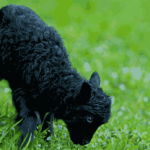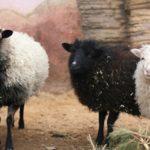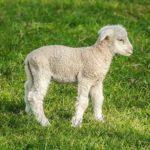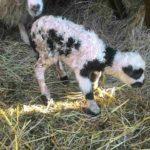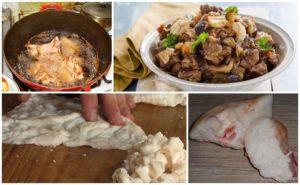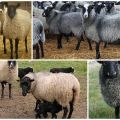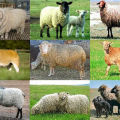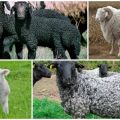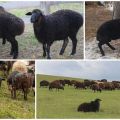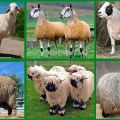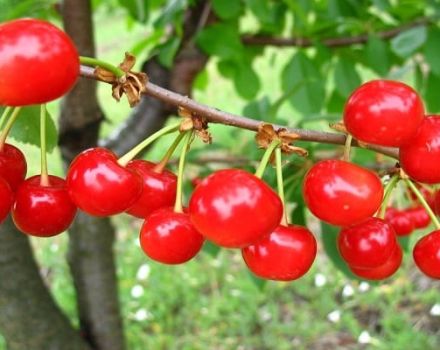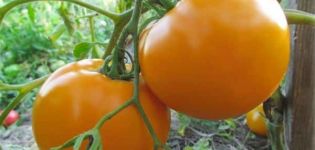Description of the 6 smallest dwarf sheep breeds and their content
Dwarf sheep have long been domesticated and raised mainly by small-scale farmers. These animals eat less than their closest relatives, however, their productivity is much lower. Mini-sheep are beneficial to breed for summer residents and owners of country houses. Such animals do not require any special care, take up little space, and also play the role of companions or pets. Dwarfs can be raised for meat and wool.
The origin of dwarf sheep
Dwarf sheep are similar to "normal" animals, only they are slightly smaller. The height at the withers, even in adulthood, reaches only 40-50, a maximum of 60 centimeters. And such animals weigh no more than 10-20-37 kilograms. Their origin is quite natural. Most of the small sheep that are kept for decorative purposes in petting zoos or private farms are natural creations.
These are not dwarfs, sick with some diseases, but just small animals. Their appearance was influenced by their habitat, food, climate, the need for camouflage and protection from enemies. Small sheep can be found on the French island of Ouessant or on the Shetland Islands, in West and Central Africa.
European dwarf animals grew up in difficult climatic conditions, where it was precisely their small growth that helped them to protect themselves from the cold on the plains blown by all the winds. African dwarfs, on the other hand, are adapted to a poor diet and a hot desert climate.
Mini sheep are bred for wool, meat and as pets. They are herd animals that love company and eat mainly grass in summer and hay in winter. They grow up to three years. Then growth at around 50-60 cm at the withers stops. Life expectancy, under normal conditions of detention and quality nutrition, is about 15-20 years. It is profitable to keep and breed dwarfs, however, buying a mini-breed will cost at least $ 200.

Popular breeds
The most popular dwarf sheep:
- Decorative Cameroon. They are reddish-brown sheep with black spots on the belly and legs, and are originally from Cameroon. Height at withers - up to 60 cm, weight - up to 37 kg. The rams have spiral horns growing to the sides, and the females are hornless. These fertile animals give birth to 2-3 cubs at a time. Sheep have short hair. At home, they are bred mainly for meat.
- Wessan (wessent). This breed is also called the Breton dwarf. The animals come from the island of Ouessant, which is located in the Atlantic Ocean near the western coast of France. The harsh climatic conditions have influenced the formation of this hardy breed. Height at withers - 40-49 cm, weight - 13-22 kg. The color of the coat is black, but it can be chestnut, brown, gray, white. Rams have large, spiral horns on their heads.Grown for wool and meat.
- Dwarf Romney from New Zealand. The animals of the dwarf breed were artificially bred by New Zealand zootechnicians on the basis of Romney sheep from the UK. The dwarfs have an elongated body, short legs, white hair, and a long tail. Height at the withers - no more than 50 cm. Rams and sheep are hornless. Dwarf Romney is bred for wool and meat.
- West African dwarfs (gnome, Nigerian dwarf). These are sheep up to 50-60 cm high and weighing up to 37 kg. They have long been domesticated and live in West and Central Africa. Wool - short, color - white or piebald (white-brown, white-black). The rams have horns, the females are hornless. Grown for meat.
- Dwarf cheviot. This mini sheep is native to the UK. The breed is meat-wool. The height at the withers of the animal is 50-60 cm, weight - 20-40 kg, coat color - dark or light.
- Shetland sheep. The animals are native to the Shetland Islands. Height - no more than 60 cm, weight - about 37 kg. Coat color - brown, light. Raised for meat and wool.
The smallest lamb
The smallest is the Ouessant breed, or Breton dwarf. This animal is from the French island of Ouessant. Rams and sheep do not grow above 50 centimeters. Sheep, even in adulthood, weigh like dogs - about 10 kg. The rams are slightly larger.
The Wessans are raised for wool and meat. The productivity of this breed is low. Animals have long, up to 12 cm, wool, which can be cut in spring. Most often, black sheep are bred. Sometimes dwarf hair can be reddish, brownish or white.
The animals are bred by farmers and lovers of exotic breeds in Germany, France and the UK. Dwarfs have a friendly character, they are excellent companions, pets loved by children. By the end of the first year of life, the sheep weigh about 20 kg, the slaughter yield of meat is approximately 50 percent.

Features of the content
Dwarf sheep should be grazed outdoors in summer. Animals should eat green grass and be in the sun. It is necessary to build a special room for the sheep, where they will rest at night, hide from the rain, and be kept all winter. You can take them your corner in the barn. One animal should have 1-1.5 sq. m area.
Decorative mini-breeds are not recommended to be kept in a residential building or apartment. These animals will climb the furniture, chew, and besides, it is unrealistic to train them to the tray. The best place for dwarfs is a barn, a barn, a sheepfold and a kennel. Indoors, you need to put a manger for hay, feeders for vegetables and grain, drinking bowls for water.
Dwarf sheep can be kept as a living lawn mower. They will trim all the grass on the lawn near the house. In summer, animals can be fed with tops, finely chopped vegetables from the garden and fruits from the garden.
For the winter, sheep need to prepare hay (up to 300 kg per individual). Animals must be kept indoors during winter. They are fed 2-3 times a day. Vegetables are given in chopped form. One sheep eats 1-2 kg of hay, 0.5 kg of root crops, 100-250 g of grain (barley, oats, corn), 1-2 kg of silage per day. The dwarfs are watered in between feedings (2 times a day). One sheep is given 2-3 liters of water at a time.
In winter, the animals are fed with premixes, bone meal, chalk, meal, cake, and pharmacy vitamins and minerals must be bought. The salt stone should be in the trough all year round.
Breeding
For breeding, it is better to buy purebred animals in a breeding farm.Dwarfs reach sexual maturity at 6-8 months. True, the animals are mated later. Sheep are covered at 1-1.5 years. The female's pregnancy lasts 5 months. She gives birth to 1-3 cubs (depending on the breed). Lambs up to 3 months should live under the ewes and feed on its milk. Then the sheep are gradually transferred to hay and grass.
At the age of 3 months, dwarfs are recommended to be vaccinated against the most dangerous diseases (foot and mouth disease, anthrax, smallpox, rabies).

